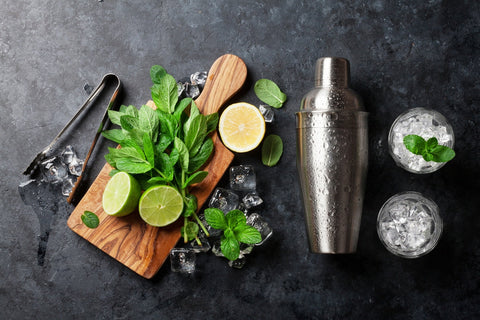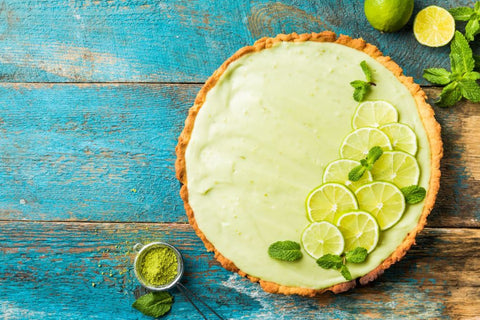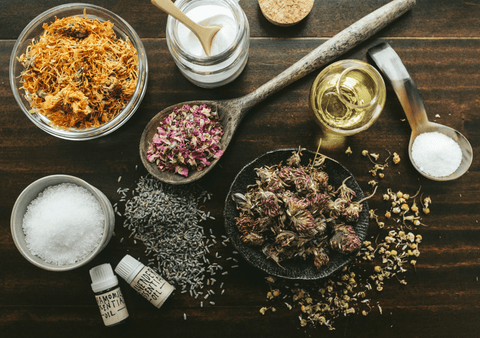If you’re a newbie to cocktail-making or an aspiring mixologist, this interview with our expert, Laura Lashley from Seedlip, is perfect for you. Laura is the National Education Manager for Seedlip, the world’s first distilled non-alcoholic spirit brand. Before joining Seedlip, Laura worked with some of the best bartending and hospitality teams around New York. So, if you’re looking for someone to guide you through the art of mixology, Laura is your go-to expert!
What are the Essential Ingredients and Equipment for Making Cocktails?
Ready to start making cocktails at home but unsure what equipment or ingredients you need? Laura says the essential tools are:
- 2-piece cocktail shaker (preferably metal or tin)
- Hawthorne strainer
- Jigger
- Citrus juicer
If you’re not ready to invest in all these tools, a travel mug with a lid and a measuring spoon can also do the trick!
As for ingredients, having a good selection of whiskey, vodka, gin, tequila, or other spirits is a great start. Don't forget a bottle of vermouth—store it in the fridge after opening to keep it fresh. And if you're into non-alcoholic cocktails, a bottle of Seedlip is a fantastic substitute for traditional spirits.
Do You Need Fresh Citrus and Herbs for Making Cocktails?
Freshness is key when making cocktails. Once you have the foundation (the spirits), it's time to build flavor. Fresh citrus, cucumbers, berries, and herbs are crucial for achieving complex flavors. Laura insists that your citrus juice must be fresh. Pre-packaged citrus juices are pasteurized, which alters the flavor—there's just no substitute for the real thing!
Herbs should also be fresh. If you have an excess, like mint, Laura suggests using them to infuse syrups or honey. Frozen or pureed fruits like berries and peaches can work too, as long as they're made from 100% real fruit. Avoid artificial flavorings like corn syrup and food dyes for the best results.

How Can You Make Cocktails More Appealing to Our Senses?
"You drink with your eyes and your nose before you drink with your mouth," says Laura. The visual and aromatic appeal of a cocktail, such as a citrus wheel or a sprig of mint as a garnish, enhances the overall drinking experience. By incorporating these elements, you elevate your cocktail game.
What Other Herbs Can You Use in Cocktails Besides Mint?
There are many herbs you can grow on your windowsill that make great additions to cocktails. Laura loves using basil, particularly Thai basil, for its sweetness. Savory herbs like dill and marjoram add an unexpected flavor balance to fruity cocktails. Thyme and rosemary are also good, but use them sparingly as they can be overpowering. Essentially, any herb you cook with can be a great addition to a drink.
How Does Seedlip Fit into the Category of Spirits?
Seedlip offers three different expressions (flavors) that don’t mimic traditional spirits but provide a unique non-alcoholic experience. For example, Seedlip's Spice expression, with flavors like allspice berries, oak bark, and cardamom, works well as a substitute for whiskey or rum. Meanwhile, Seedlip's Garden expression is fresh and herbaceous, making it a great substitute for gin.
Understanding the Building Blocks of Cocktails
Anyone can make a cocktail once they understand the basic elements: acidity, sweetness, bitterness, body, and texture. The spirit serves as the foundation, bitterness often comes from botanical flavors or vermouth, and dilution occurs as ice melts while stirring or shaking. With these basics, you can start creating your own cocktails at home.

Garden Eastside Cocktail Recipe
Ingredients
- Seedlip Garden 108: 2 oz (flavor contains peas, hay, spearmint, rosemary, thyme, and hops)
- Simple Syrup: 3/4 oz
- Fresh Lime Juice: 1/2 oz
- Cucumber Slices: 3
- Mint Leaves: 5
- Ice: Cubed for shaking
Steps
- Roll your lime to release juices, then use a citrus juicer to extract the juice into a glass.
- Pour 1/2 oz of lime juice into a jigger, then into the cocktail shaker.
- Add 3/4 oz of simple syrup (equal parts sugar and water), cooled in the fridge, into the jigger and then the shaker.
- Add fresh mint leaves (you can opt to muddle them, but Laura prefers letting the ice-shaking do the work of gently bruising them).
- Add 2 oz of Seedlip Garden.
- Close the lid of the cocktail shaker and shake until condensation forms on the outside.
- Pour the mixture into a glass and garnish with a slice of cucumber.
Pro Tips from Laura
- Use the recipe as a template and adjust to your liking, whether sweeter or more tart.
- If using gin, even out the sweet and sour components (3/4 oz syrup and 3/4 oz lime juice).
- Add your most expensive ingredient last to avoid waste if you need to start over.
- The flavor of your simple syrup depends on the sugar used. Add herbs while cooling for more flavor.
- Slapping mint before using it releases its essential oils and aroma.
- Shaking a cocktail not only chills it but also dilutes it slightly with water from the ice and adds texture.
In Conclusion
The biggest takeaway from Laura's insights is that making cocktails isn’t difficult once you understand the flavor profiles. With a few good tools and fresh ingredients, you can start mixing your own cocktails at home. For the freshest herbs, why not grow your own with our Herb Seed Collection? You can pick them right off the stem! And for those who love unique gardening projects, check out our Bottle Garden Kit—perfect for growing cocktail-ready herbs. Curious about more cocktail ideas? Try our Strawberry Daiquiri Recipe and mix up something delicious. The world of mixology awaits you!








There are no comments for this article. Be the first one to leave a message!